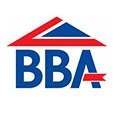Rendering vs Cladding: Is rendering better than cladding?
What rendering and cladding have in common is that they’re both home improvement solutions that can add a kerb appeal to your property, protect the exterior and structure and raise the property’s value.
If you’re planning on transforming your home and giving it a much-needed makeover, there is a wide range of rendering and cladding options available to choose from. To help you make the right decision, we’ll be going into detail about which option is better in certain situations and their overall benefits.
What is cladding?
Cladding is a material that is attached to the exterior of your home’s walls to form an outer weatherproof skin to the home. The different types of cladding you can find are stone cladding, brick cladding, PVC cladding, timber cladding, metal cladding, concrete cladding, weatherboard cladding and glass cladding. In the UK, the most common and popular choice is PVC cladding.

What is rendering?
Rendering is a type of external wall covering that is added to a property. Rendering can be installed to create a smooth, textured or patterned finish, and comes in a wide range of colours. It can help improve your home’s insulation and can be applied to both old and new properties.
The potential of external render to fully transform an old house or even a new-built is undoubtedly worth exploring. Especially if combined with external wall insulation, which can further add value in terms of improving the property’s thermal performance and appearance.

Benefits of PVC cladding and rendering
When it comes to the benefits of each of these solutions, they both are:
- Low-maintenance
- Great at protecting the facade of the property
- Aesthetically pleasing
- Fire resistant
- Weather and UV resistant
- Available in different styles/colours
- Durable & long-term solutions
- Excellent in adding a layer of insulation to the structure of the building
There are very few differences between rendering and cladding when it comes to how they will benefit your property. What will truly help you make the decision of which option to go for is their affordability and style. If you’re thinking about PVC cladding, that is the option that is usually on par with rendering when it comes to expenses.
Timber, weatherboard and metal cladding are generally on the more expensive side. The cost will naturally come down to what your personal preference is in regard to materials and finishes.
For a contemporary cost-effective look, rendering is usually a better option as it offers a clean and sleek appearance. Potentially, you can also combine render and cladding to complete a more modern exterior. If going for cladding the whole exterior, you can achieve a more trendy exterior by using a combination of different cladding materials, for example, metal and timber.
However, that combo can come at an extra cost due to the nature of the materials used. For a more traditional look, you can choose brick slips or brick render in combination with PVC cladding a section of the property.
You’d also have to keep in mind that the exterior should match the interior. You can try and draw inspiration from your existing interiors and try to replicate them on the outside.


Why Silicone Render is the Best Choice for a Property’s Exterior: Benefits, Application & Aesthetics











